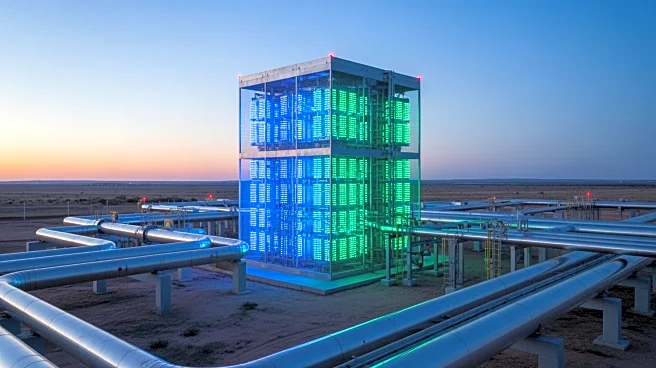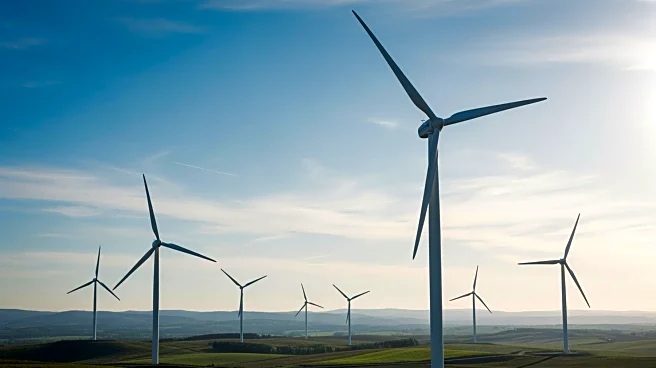What's Happening?
Chevron Corp. has selected West Texas as the site for its first natural gas-fired power project aimed at supporting a data center, marking a strategic move to leverage the growing demand for energy in the artificial
intelligence sector. The company is in exclusive talks with the data center's end user and expects to make a final investment decision early next year. The facility, anticipated to be operational by 2027, will have the capacity to generate up to 5,000 megawatts. Chevron, a major producer in the Permian Basin, plans to utilize its abundant natural gas resources to power the data center, which will be located away from major population centers to be closer to fuel sources.
Why It's Important?
This initiative represents Chevron's strategic entry into the AI sector, capitalizing on the increasing energy demands of data centers. By utilizing its natural gas resources, Chevron aims to secure a stable demand for its output, potentially enhancing its revenue streams. The project aligns with Chevron's broader strategy to grow production while reducing capital spending, thereby increasing free cash flow. The collaboration with Engine No. 1 and the order for natural gas turbines from GE Vernova Inc. further underscores Chevron's commitment to expanding its energy portfolio and adapting to market shifts.
What's Next?
Chevron executives are expected to provide more details on the power strategy during the upcoming investor day. The company plans to continue growing production through 2030, with a focus on operational efficiency and capital management. The anticipated increase in free cash flow and reduced capital budget are likely to support Chevron's long-term financial goals. The project may also prompt other energy companies to explore similar ventures, potentially reshaping the energy landscape in relation to AI and data center operations.
Beyond the Headlines
The move into AI-powered data centers highlights a shift in the energy sector towards more tech-driven solutions. Chevron's project could set a precedent for other oil giants to diversify their portfolios and explore new revenue streams. The environmental impact of such projects, particularly in terms of natural gas usage, may also become a focal point for stakeholders concerned with sustainability and emissions.













